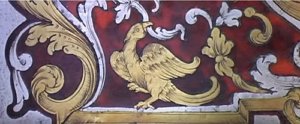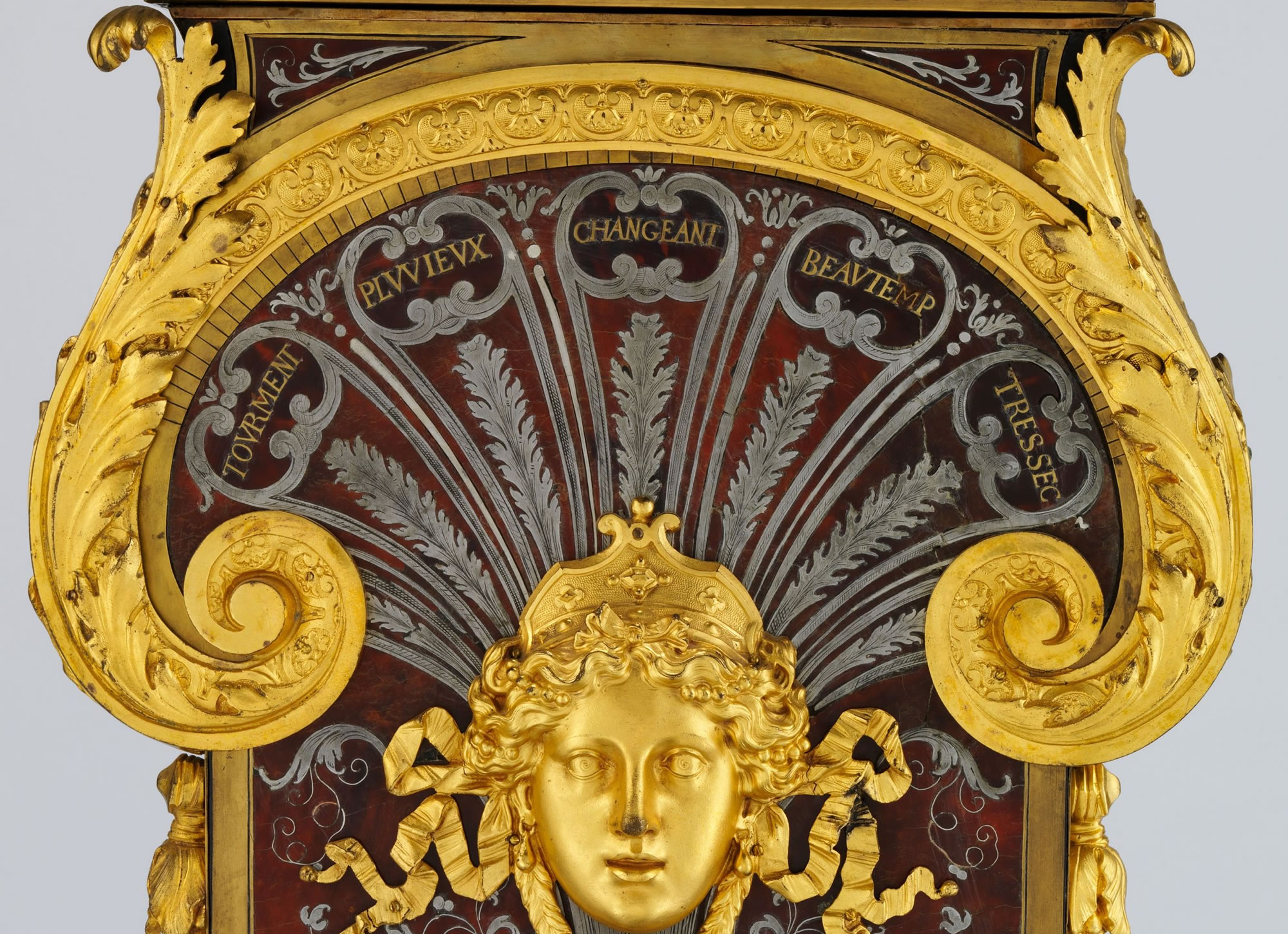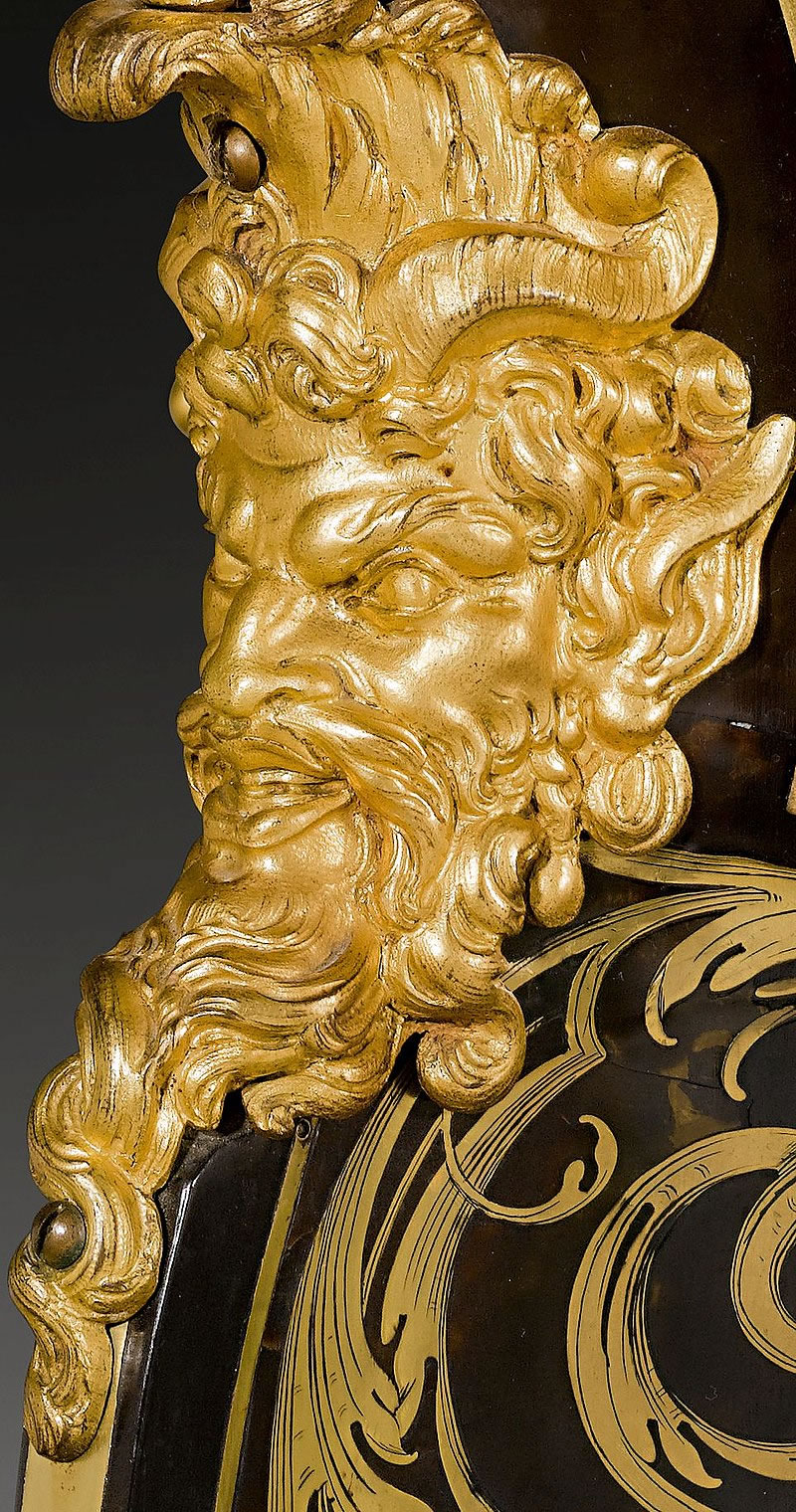Boulle Inlay
 brass, pewter, mother of pearl and even animal horn. For contrasting woods, Boulle often used rosewood, ebony, kingwood, and other dense, dark-toned tropical species. Boulle’s marquetry technique was to make two contrasting sheets of intricate inlay that were cut from a single sandwich of materials. If the sandwich, or packet, contained two layers that were light and dark, the two final products would be a sheet with a light pattern on a dark background, and a reversed sheet, with a dark pattern on a light background. One sheet would have been considered the primary pattern, in French the ‘première partie’. The opposite pattern was called the counterpart, or ‘contrapartie’. By sawing both patterns out of one packet and reassembling them on two trays, the background of the ‘première partie’ becomes the motif of the ‘contrapartie’. Boulle made cabinets with both patterns in a single piece or, alternatively, in pairs of contrasting cabinets.
brass, pewter, mother of pearl and even animal horn. For contrasting woods, Boulle often used rosewood, ebony, kingwood, and other dense, dark-toned tropical species. Boulle’s marquetry technique was to make two contrasting sheets of intricate inlay that were cut from a single sandwich of materials. If the sandwich, or packet, contained two layers that were light and dark, the two final products would be a sheet with a light pattern on a dark background, and a reversed sheet, with a dark pattern on a light background. One sheet would have been considered the primary pattern, in French the ‘première partie’. The opposite pattern was called the counterpart, or ‘contrapartie’. By sawing both patterns out of one packet and reassembling them on two trays, the background of the ‘première partie’ becomes the motif of the ‘contrapartie’. Boulle made cabinets with both patterns in a single piece or, alternatively, in pairs of contrasting cabinets.Tortoiseshell
 ‘Boulle Work’ showing the depth mottled tortoiseshell gave to André-Charles Boulle’s Art. Pewter inlay is in center with brass right and left.
‘Boulle Work’ showing the depth mottled tortoiseshell gave to André-Charles Boulle’s Art. Pewter inlay is in center with brass right and left.
Tortoiseshell was used in thin sliced inlays onto wood and is today an important reference point with regard to ‘Boulle Work‘. Despite tortoiseshell’s rarity and cost, its durability, organic warmth and mottled-red aesthetics made it particularly apt for exotic woods such as ebony. This is because it gives a sense of depth to ‘Boulle Work‘. The initial processing of tortoiseshell involves separating the layers of the scutes from the live animal’s carapace by heating and softening the plates in boiling them in salt water and thereafter flattening them under a press. Although two pieces could be fused together by use of a hot iron, great care had to be taken not to lose the colour. Finishing and polishing was done using various techniques.
Pewter
Pewter or brass inlay on tortoiseshell was known as première-partie, while tortoiseshell inlay on brass or pewter was contrapartie. For an even more sumptuous effect, mother-of-pearl, stained horn and dyed tortoiseshell would be included in the design.

